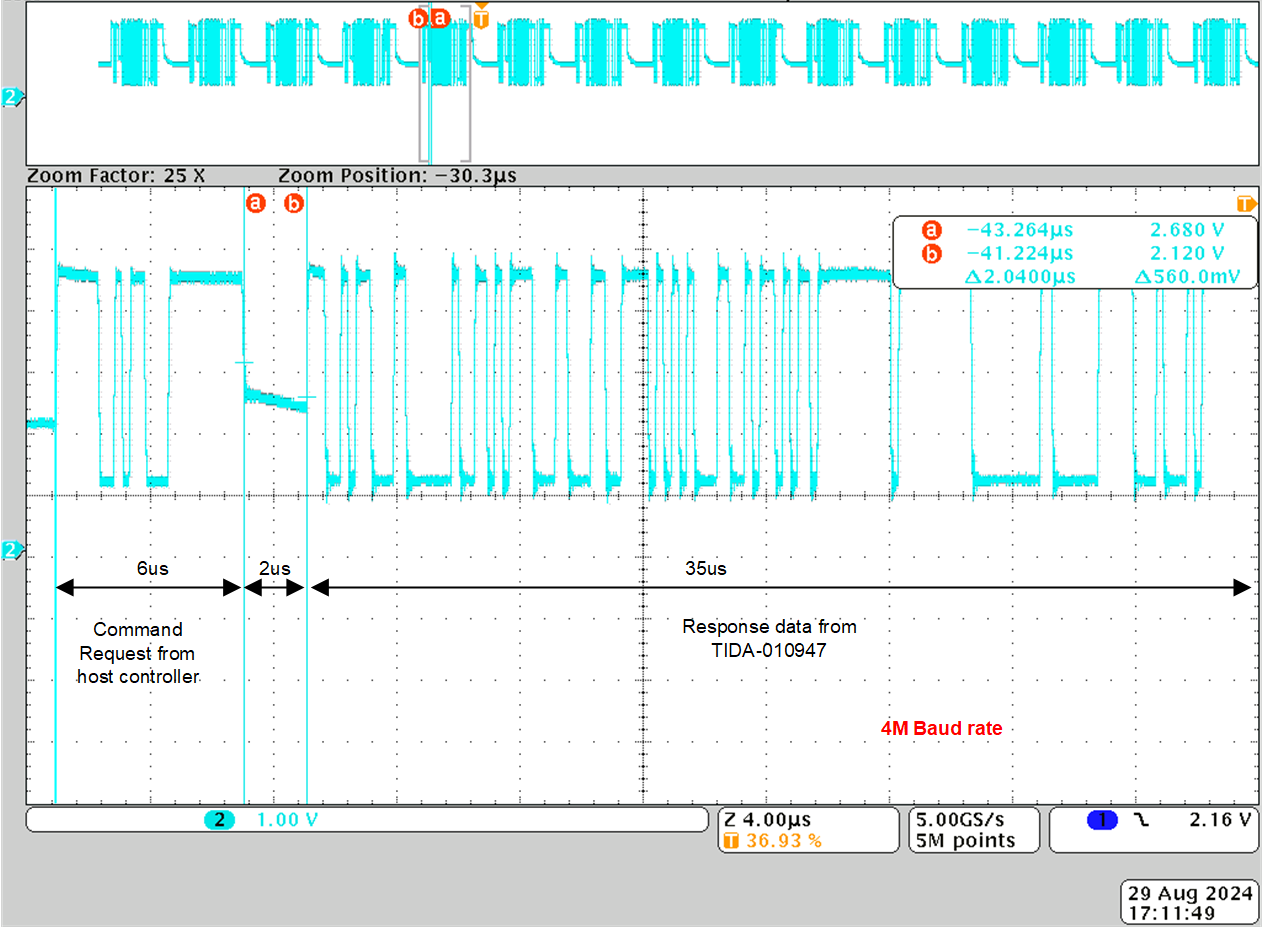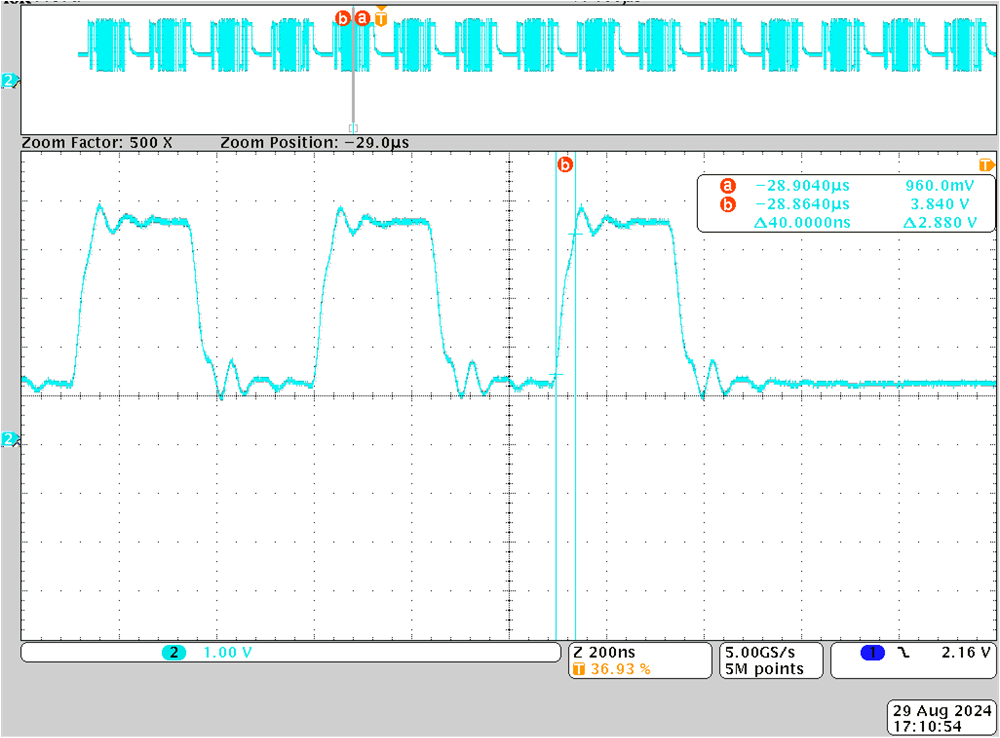TIDUF97 September 2024
- 1
- Description
- Resources
- Features
- Applications
- 6
- 1System Description
- 2System Overview
- 3System Design Theory
- 4Hardware, Software, Testing Requirements, and Test Results
- 5Design and Documentation Support
- 6About the Authors
4.3.4 RS485 Interface and Signal Integrity
 Figure 4-21 Timing Diagram (Tamagawa T-format) to Request New Angle Data
Figure 4-21 Timing Diagram (Tamagawa T-format) to Request New Angle DataFigure 4-21 shows the communication timing diagram between host controller and TIDA-010947. The communication is based on T-format protocol. The host controller sends a command request every 62.5us (32kHz), TIDA-010947 responds with the corresponding angle data within 2us. The request command takes 6us and response data takes 35us.
In Figure 4-22 shows the rise and fall time of RS485 signal, which are around 40ns. Since UART baud rate is 4M, 1bit signal can last 250ns, so the rise and fall time do not influence communication.
 Figure 4-22 RS485 Signal Rise and Fall Time
Figure 4-22 RS485 Signal Rise and Fall Time